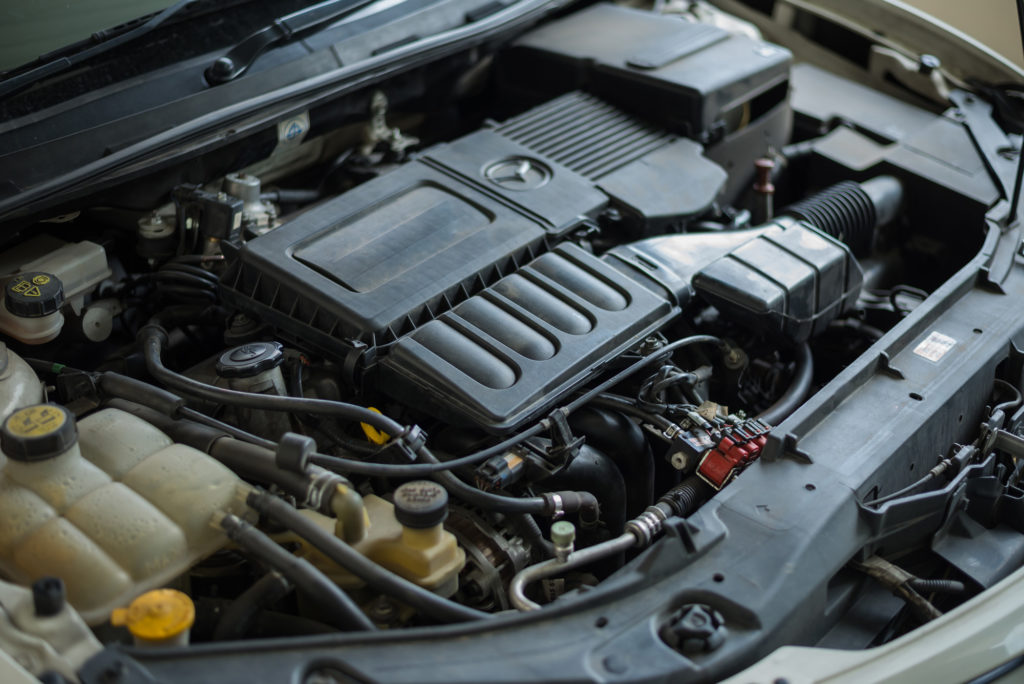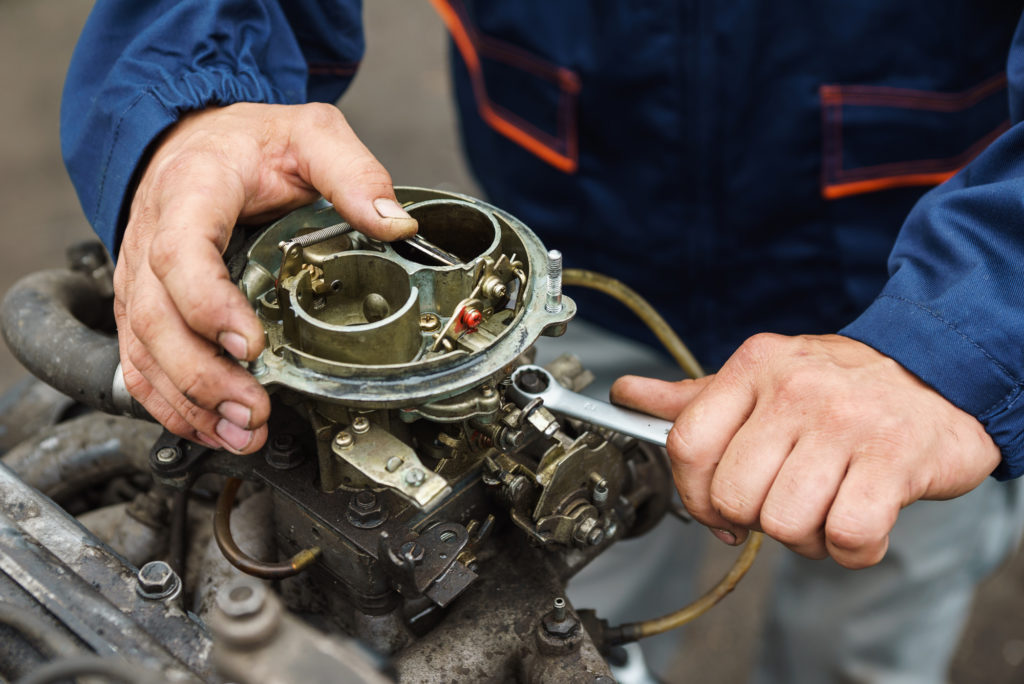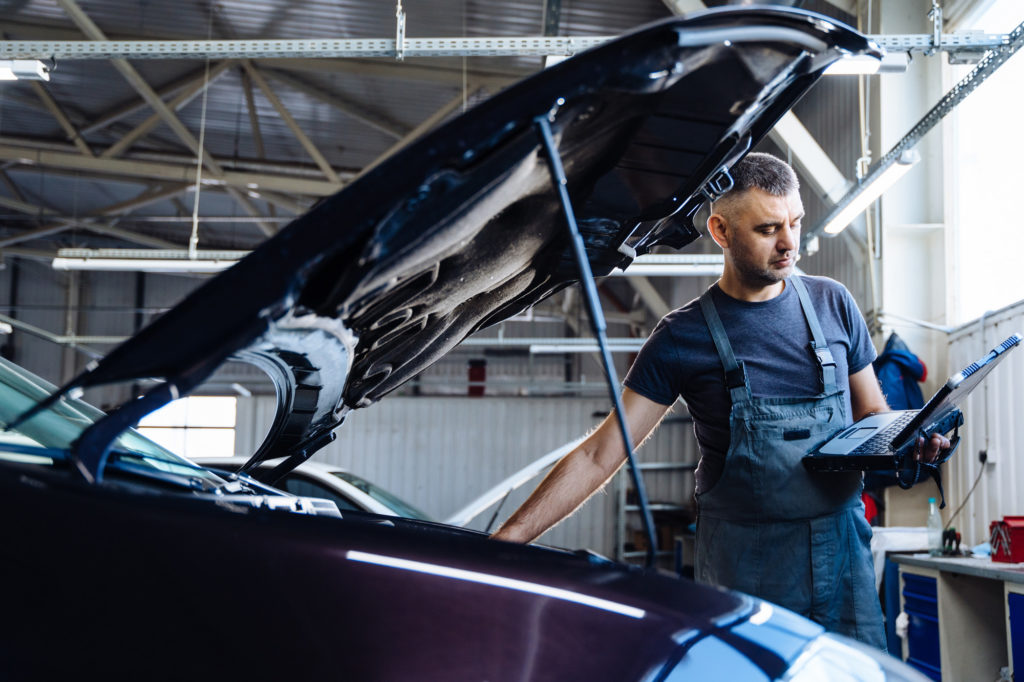Computers in cars sounded like an outrageous idea back then, given the fact that old computers took up an entire room. So when the world’s first engine computer was built, everybody wanted to get a piece of it and become a part of possibly the greatest innovation in the automotive industry.
When Did Cars Start Having Computers?
It wasn’t until 1968 when Volkswagen released the Type III一the world’s very first compact car that was manufactured with an engine computer. The Type III had a Bosch D-Jetronic electronic fuel injection (EFI) system.
12 years after the Type III rolled out, manufacturers like Ford, Chevrolet, BMW, Mercedes-Benz, Cadillac, Chrysler, Oldsmobile, Porsche, and Volvo released their own computer-controlled models. And by 1990, every car produced in the west had computers as well.
Why Was There a Need to Install Computers?

Engine computers were developed so that vehicles can meet the government’s emission control regulations. Before fuel injection was popularized, most vehicles had carburetors, which wasted fuel because they weren’t capable of adjusting air pressure, fuel temperature, and fuel ratio.
What Did the Bosch D-Jetronic Do?
The Bosch D-Jetronic is a transistorized electronic module that came with three subsystems一the air intake system, fuel system, and electronic control system.
The D-Jetronic, which was standard equipment on the Type III, was the first computer to rely on constant fuel pressure and flow. By using this technique, injection duration became the only variable that needed to be modified to regulate the air/fuel mixture. The D-Jetronic also receives feedback from the intake manifold pressure to measure incoming airflow.
How Did the D-Jetronic Operate?
Here’s how Bosch’s engine computer controlled various systems in the Volkswagen Type III and the other models that followed, including the Mercedes-Benz 250E, Porsche 914, Saab 99E, and Jaguar XJ-S, among others.
Fuel System
Fuel passes through a filter using an electric fuel pump and eventually reaches the main system. The main system has one injector for each cylinder and comes with a fuel pressure regulator that maintains fuel pressure at a specific value. After fuel flows to the main system, a secondary system will route the excess fuel back to the fuel tank.

Air System
The intake manifold supplies air to the cylinders. It comes with an intake air distributor that has a pressure sensor, which operates according to the difference in atmospheric and manifold pressure. To help the engine warm up, an auxiliary air line connects the auxiliary air valve to the intake air distributor.
Electronic Control System
Electronic fuel injection (EFI) is arguably one of the labor-intensive jobs the computer has to do. The electronic control unit is responsible for determining the right amount of fuel to be injected into the engine. The computer uses information on engine speed, intake pressure, and engine temperature to calculate fuel injection. Once the ignition is turned on, the electronic control unit also controls the fuel pump.
What Was the Last Car Made Without a Computer?
It might be hard to imagine a time when vehicles weren’t considered computers on wheels. A lot of vehicles today are running on several computers and auto chips that control various functions一an idea that seemed impossible a few decades ago.
The last vehicle that was recorded to run on a carburetor instead of a computer was the 1991 Oldsmobile Custom Cruiser. The Custom Cruiser was a station wagon that sported a Chevrolet 350 V8 engine.
How Did Vehicles Run Before Computers Were Popularized?

Older vehicles used to run on a carburetor. Although this device provides a simpler method to mix air and fuel in an internal combustion engine, it wasn’t as efficient as EFI.
Carburetors were the most popular type of fuel delivery system until the late 1990s. The carburetor works according to the principle of the vacuum venturi effect, where vacuum is created using a venturi tube that decreases air pressure.
Once a vacuum is created, fuel is drawn to the carburetor where the choke and throttle adjust the air/fuel ratio. The carburetor body also has a secondary fuel tank that supplies fuel to the engine. A float triggers a valve to refill the chamber once the fuel level drops.
What’s the Difference Between a Carburetor and Fuel Injection Delivery System?
Carburetors were eventually phased out once the fuel injection delivery system was capable of doing more things effectively.
In terms of versatility, the carburetor was limited to gasoline engines while fuel injection is designed for both diesel and gasoline vehicles. The carburetor’s simple mechanism also limited its capacity to measure air/fuel ratio and change air pressure and fuel temperature whereas fuel injection can adjust these variables accordingly.
Lastly, fuel injection systems are built to be more fuel efficient than a carburetor because they are able to adjust the amount of fuel injected into the engine depending on certain conditions.
How Far Has the Engine Computer Gone?

Today, the engine computer, commonly known as the powertrain control module (PCM), has developed even more capabilities since it was first integrated into an internal combustion engine.
The PCM relies on even more sensors than before to keep tabs on everything and make sure the vehicle is running smoothly. A modern-day PCM performs basic functions like regulating fuel injectors, controlling spark plugs, adapting to idle speed, monitoring the ignition system, and illuminating the check engine light in case of problems.
Advanced PCMs are also self-learning, which means they are capable of adjusting to certain driving conditions, such as making gear shifts smoother, determining the best spark timing, and controlling fuel injection timing.
The average PCM has a 32-bit, 40-MHz processor that takes up less than one megabyte of memory. The computer’s multi-level circuit board is also built with components like analog-to-digital converters, high-level digital outputs, signal conditioners, communication chips, and digital-to-analog converters.
Any information provided on this Website is for informational purposes only and is not intended to replace consultation with a professional mechanic. The accuracy and timeliness of the information may change from the time of publication.















